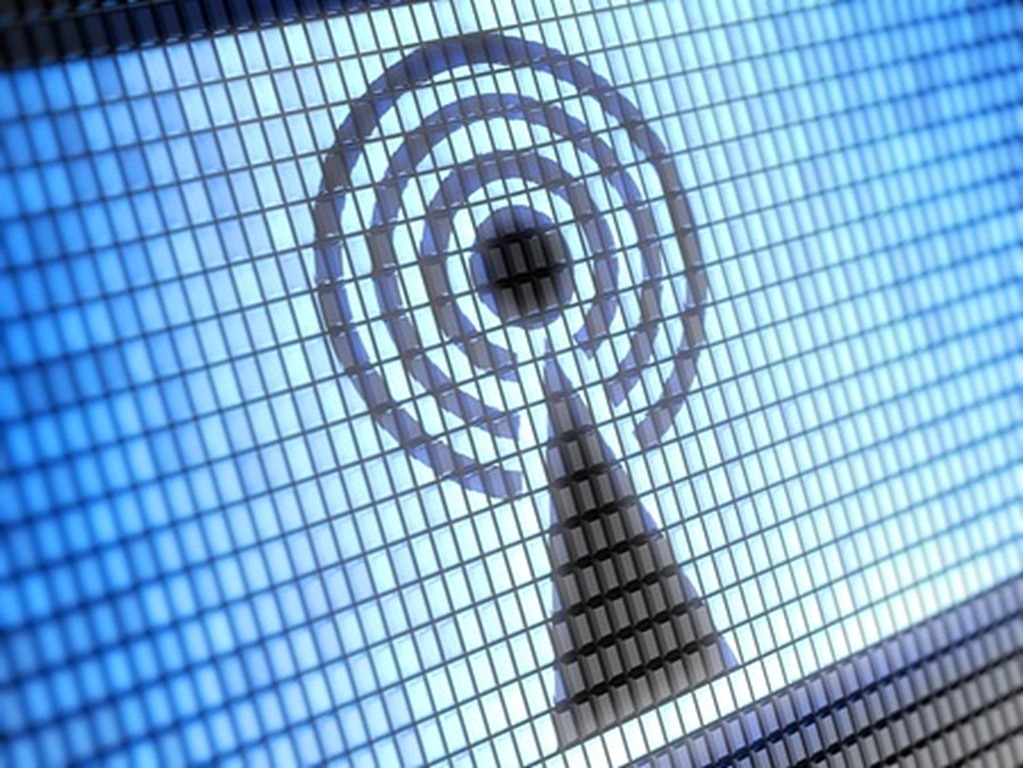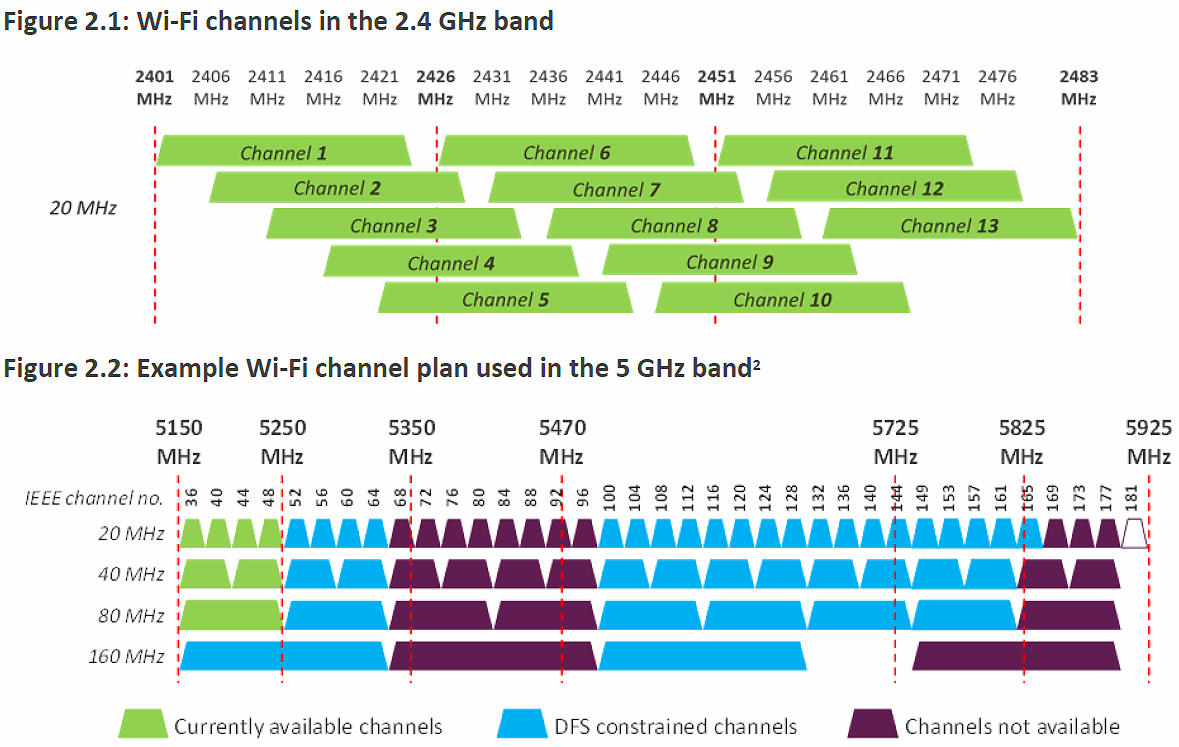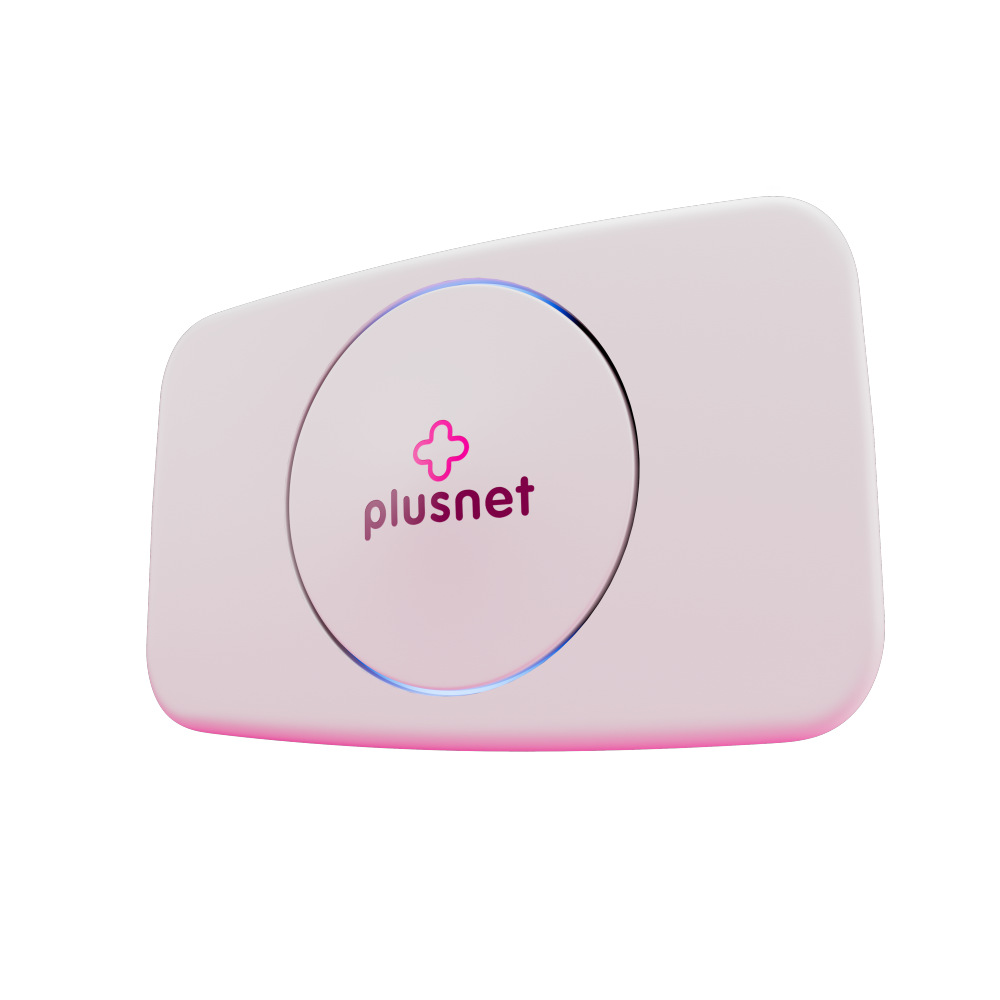Ofcom UK Opens 6GHz Radio Band for Use in Faster Home Wi-Fi

The UK telecoms regulator, Ofcom, has today made it possible for future home WiFi networks to harness 500MHz of radio spectrum frequency in the new 6GHz band, which will significantly boost the speed of licence-exempt indoor home wireless networks (i.e. via the Wi-Fi 6/6E – 802.11ax standard).
The latest 802.11ax (Wi-Fi 6) standard promises theoretical peak data speeds of 10Gbps (Gigabits per second) via the combined 2.4GHz and 5GHz radio spectrum bands, as well as better management of spectrum in congested environments, faster latency, improved power efficiency and various other changes (see our summary). But the wider industry is now moving to add the 6GHz band to this WiFi standard via future updates (here).
The 6GHz band, being of a higher frequency than the others, will of course have a lower level of coverage than the 5GHz one due to its weaker signal, but the extra spectrum also allows more space for data (i.e. significantly faster speeds). At the same time this lower coverage should make 6GHz signals more secure for homes and reduce the negative impact from congestion via competing local WiFi signals.
Ofcom has also made the change available to other RLAN devices on a licence-exempt basis, which support Very Low Power (VLP) outdoor use.
• Make the lower 6 GHz band (5925-6425 MHz) available for Wi-Fi and other RLAN technologies.
Opening this band will make more channels available, increase capacity and reduce congestion in existing bands caused by large numbers of devices.• The release of this spectrum will also enable very low power (VLP) outdoor use.
This will enable the development of new, innovative applications.• Remove the Dynamic Frequency Selection (DFS) requirements from channels used by Wi-Fi in the 5.8 GHz band (5725-5850 MHz).
DFS requires a router to scan for radars and to switch channel if suspected radar transmissions are detected. DFS can therefore represent a constraint for equipment manufacturers regarding quality of service and throughput as well as being the cause of connection delays for users. We are amending the requirements on this band on the basis that the risk of undue interference from indoor Wi-Fi use is extremely low. The removal of DFS will increase its use for indoor wireless applications and help reduce congestion in other bands.
The question now is how long we’ll have to wait before the first 6GHz supporting broadband routers, adapters and other devices start to enter the UK market. In theory this shouldn’t take too long as the key elements are already present via the existing 802.11ax standard, but new hardware always has to go through a lot of tweaking and testing before it reaches the market.

Mark is a professional technology writer, IT consultant and computer engineer from Dorset (England), he also founded ISPreview in 1999 and enjoys analysing the latest telecoms and broadband developments. Find me on X (Twitter), Mastodon, Facebook and Linkedin.
« ISP Vodafone UK Grows Fixed Broadband to 793,000 Customers
Latest UK ISP News
- FTTP (5513)
- BT (3514)
- Politics (2535)
- Openreach (2297)
- Business (2261)
- Building Digital UK (2243)
- FTTC (2043)
- Mobile Broadband (1972)
- Statistics (1788)
- 4G (1663)
- Virgin Media (1619)
- Ofcom Regulation (1460)
- Fibre Optic (1394)
- Wireless Internet (1389)
- FTTH (1381)





























































The removal of DFS is quite significant. I don’t use it because it takes too long to wait for activation of the upper channels which is inconvenient for testing new settings and there’s a little 5GHz congestion here already so this news is quite welcome. The question is. How long before firmware suppliers (especially VM) care about removing this limitation?
Are these new regulations in force now?
Firmware upgrade for existing ax routers or new routers required?
Technically you could make an 802.11ax router that would be upgradable to support 6GHz via firmware, but I suspect the commercial imperative will mean we only see this in newer models (some tweaks may also be required to make the most of 6GHz). Happy to be proven wrong on that.
Sorry Mark, but unless they have recently changed the laws of physics, then it won’t be possible to have a firmware update to make AX (Wifi 6) routers use the 6Ghz range as they will need a physical chipset change (Which would require some soldering)
@MyYoubes,
Software defined radios.
@Spurple
That still does not stop the chipset from having to be physically replaced, hence why no Wifi5 routers have been given a software update to Wifi6. Instead if people want Wifi6 it involves purchasing a new router.
I wonder if the removal of the DFS restrictions is something that can be done via firmware, or if it’s hard coded and would require recertification of a device?
DFS specs very country to country so this is usually managed by firmware
What about frequency for WISP’s?
It’s great to have more spectrum available, however I wish Ofcom had followed the US and opened up 5925-6875, not just 5925-6425.
Hopefully they will open up 6425-6875 at a later date.
Sad to see DFS go, I can get 600mbps on WiFi 5GHz next to the router compared to the non DFS channel. https://twitter.com/Pro4TLZZ/status/1266768150512746498
DFS frequencies aren’t going. They’re being added to the normal frequencies so no need for them to be DFS and available or unavailable depending on surroundings.
This is unequivocally a good thing.